Last Summer I posted my tired and true pesto recipe. I’ve been making my pesto recipe for so long, I could probably make it with my eyes closed (though I do not recommend doing this). I stumbled across a recipe for Genovese basil pesto in the 2013 July/Aug issue of La Cucina Italiana Magazine. The article mentioned most Americans have never understood how to properly prepare pesto. The article’s author often found American pesto “army green in color”, and “too garlicky”. My initial response to the article was “HARRUMPH!”, but then I began to wonder; how different could their recipe really be from mine? I mean, I LOVED my pesto sauce. I went ahead and made the Genovese version last summer and it truly is the best pesto I’ve ever eaten. Pea green in color with just a hint of garlic, smooth and mild, yet still very earthy; this pesto was well worth the extra hassle of soaking the basil leaves. Since La Cucina Italiana Magazine’s last issue was Jan/Feb 2014, (even their website is GONE) I felt I should share this with America so we can all begin to make proper pesto! Thanks La Cucina, you will be missed.
Firstly, if you have a glass jar for your blender, place it in the freezer to chill. When you choose your basil, try to pick the smaller leaves. Try for “Italian Classic”, “Sweet” or “Genovese” basil plants. The leaves should be cup-shaped and pale emerald in color. The larger leaves are tougher and more licorishy tasting. Pick four cups of packed basil leaves.
Fill a large bowl with cold water. Gently submerge the leaves in the cold water and let sit for five minutes, then drain off the water. Do this a total of three times. After the third soak, fill the bowl with cold water again, and submerge the leaves once more, this time for fifteen minutes.
While the basil is soaking, grate your cheese. If you only have Parmigiano-Reggiano it’s ok, but the recipe called for parm and fiore sardo, so I obliged and was not disappointed. Grate the cheese with a microplane zester. You need to get the grate as fine as possible.
After the basil has finished soaking, do not drain it, leave it in the water. Next, grab your chilled blender jar from the freezer. Dump the pine nuts into the blender jar along with the garlic clove and then cover it with the olive oil. Blend until smooth and creamy, then add the salt.
Add the basil leaves in four stages. Shake off some of the excess water, (not all of it), then add the wet basil to the blender and pulse four times in between stages. A small amount of water left on the basil helps with emulsification. Once all the basil is added, purée it just so it’s all combined. Next, add the cheese and blend until a smooth consistency is achieved.
I will put pesto on anything. The above photo is a piece of toasted ciabatta bread with mozzarella cheese, an heirloom pink tomato slice and a drizzle of pesto. Earlier today I made a pesto grilled cheese sandwich! Slather pesto on your sammie instead of mayo or mustard. Yum.
Genovese Basil Pesto Prep time: 40 minutes Makes: 1 cup pesto sauce (approximately)
- 4 cups packed basil leaves (2 oz), preferably sweet basil
- 1/3 cup pine nuts
- 1 garlic clove, green center stem removed
- 1/2 cup extra-virgin olive oil
- 1 teaspoon flakey coarse sea salt
- 1/3 cup freshly grated Parmigiano-Reggiano cheese
- 1/3 cup freshly grated Fiore Sardo (or aged Pecorino Toscano cheese)
Method:
- Place blender jar in the freezer to chill.
- Submerge basil in a large bowl of cold water and let soak for 5 minutes. Drain and repeat two more times 5 minutes each time. After the third soak, fill the bowl once more with cold water and this time let the basil leaves soak for a total of 15 minutes.
- Grate the cheeses using a microplane zester.
- Once the basil has almost finished soaking leave it in the water and set it aside. Remove the blender jar from the freezer and place the nuts and garlic in the chilled jar. Cover nuts and garlic with the olive oil and blend until smooth and creamy, then add the salt.
- In four stages, begin to add the basil leaves, shaking off the excess water but not all of it (the small amount of water helps with the emulsification) to the blender and pulse four times in between adding more basil. Once all the basil is added, purée it just so it’s all combined.
- Add the cheese and blend until a smooth consistency is achieved.
- Serve over pasta, on sandwiches, on crostini, on grilled chicken, or mix into veg!
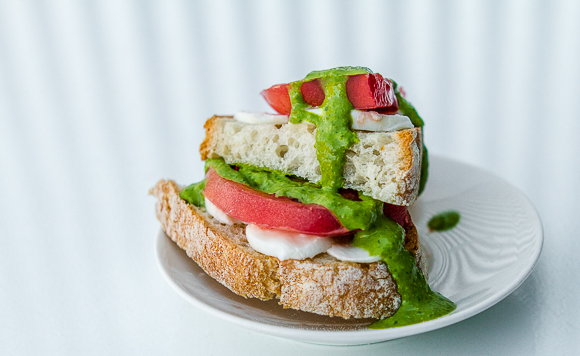

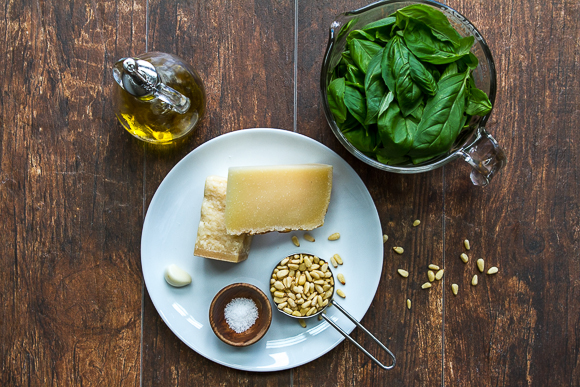

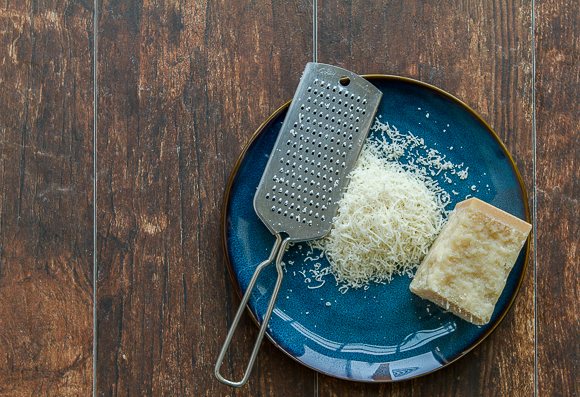
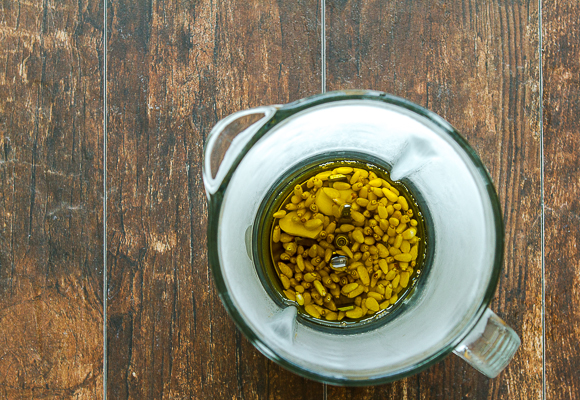

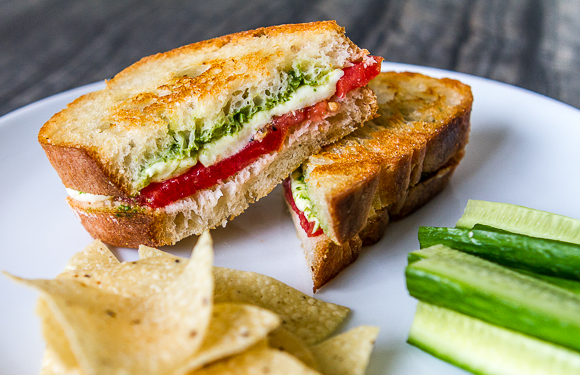
oh thank you SO much for posting this! I also had found that recipe but lent it to a friend to coup and she walked away w it! I found this morning the magazine website was completely down and feverishly searched for it elsewhere. Thanks to you!
You are welcome! I think it’s the best pesto EVER. 🙂
Mmm. Love this recipe. Pesto is a favorite condiment / sauce in our house. And thank you for sharing now that LCI mag is, sadly, no more.
Thanks Mary! I do miss the mag so…